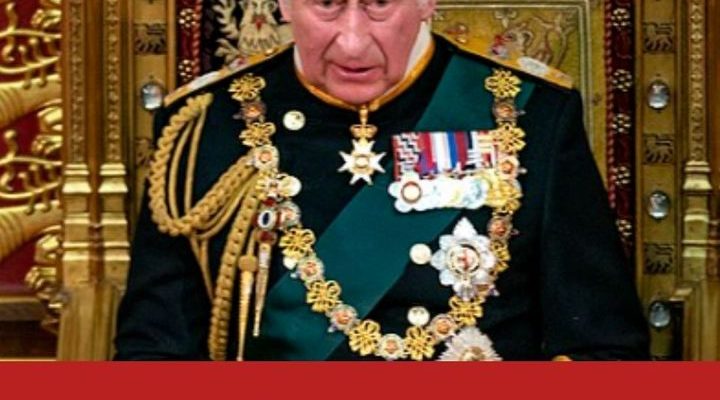Key Points on King Charles III’s Cancer Diagnosis:
- Initial Announcement and Discovery:
- King Charles III was diagnosed with a form of cancer in February 2024. The diagnosis came to light during a hospital procedure for a benign enlarged prostate, when a “separate issue of concern” was noted, leading to further diagnostic tests that identified the cancer.
- Buckingham Palace has consistently stated that the cancer is not prostate cancer, but no specific type or stage of cancer has been disclosed. This lack of detail is intentional, as the Palace has emphasized the King’s right to medical privacy while balancing public interest.
- Treatment and Public Duties:
- Following the diagnosis, the King began a schedule of regular outpatient treatments in February 2024. He was advised to postpone public-facing duties but continued to undertake state business and official paperwork.
- The Palace has described the King as remaining “wholly positive” about his treatment and eager to return to full public duties as soon as possible. He resumed some public engagements in April 2024, indicating progress in his treatment, but his schedule has been carefully managed.
- Recent Developments (As of March 2025):
- In late March 2025, Buckingham Palace reported that King Charles experienced “temporary side effects” from his ongoing cancer treatment, leading to a brief hospitalization on March 27, 2025. He was observed for a short period at a hospital in London before returning to Clarence House.
- The Palace described this as a “most minor bump in a road” and emphasized that it was a precautionary measure. His engagements for the following day (March 28, 2025) were postponed, but the overall message was one of reassurance, with sources indicating his health is still “heading in the right direction.”
- No specific details about the nature of the side effects or the type of cancer were provided in these updates, maintaining the Palace’s stance on privacy.
- Purpose of Public Disclosure:
- The King chose to share his diagnosis publicly “to prevent speculation and in the hope it may assist public understanding for all those around the world who are affected by cancer.” This reflects his long-standing role as a patron of cancer-related charities and his desire to encourage others to seek medical checks, as he did with his prostate treatment.
- Ongoing Treatment and Prognosis:
- As of December 2024, a Palace source told NBC News that the King’s treatment is “moving in a positive direction,” though it remains a “managed condition,” with treatment expected to continue into 2025.
- The Palace has not provided a timeline for when the King might fully resume all public duties or complete his treatment, but recent reports suggest he is keen to maintain an active role, often pushing his medical team and staff to allow him to do more.
- Family and Public Reaction:
- The diagnosis has coincided with other health challenges within the royal family, including the Princess of Wales, Kate Middleton, who also underwent cancer treatment in 2024 and announced in January 2025 that she is in remission.
- Public figures, including UK Prime Minister Rishi Sunak and US President Joe Biden, have expressed support and hopes for a swift recovery. Prince Harry, despite his strained relationship with the royal family, traveled to the UK to see his father shortly after the initial diagnosis in February 2024.
What Remains Unclear:
Despite these updates, several key details have not emerged, and Buckingham Palace has not elaborated further. These include:
- The specific type of cancer (e.g., whether it is lung, pancreatic, or another form).
- The stage of the cancer (early, advanced, etc.).
- The exact nature of the treatment (chemotherapy, radiation, immunotherapy, etc.).
- Long-term prognosis or expected duration of treatment.
Speculation and Rumors:
Some media outlets and social media have speculated about the type of cancer, with unverified claims suggesting it could be pancreatic cancer or another serious form. However, these reports, such as those from less reputable sources like In Touch Weekly, have been debunked or rated as unproven by fact-checkers like Snopes. Buckingham Palace has not confirmed any such claims, and reputable news organizations have respected the Palace’s request to avoid speculation.
Critical Perspective:
While the Palace’s transparency about the diagnosis marks a departure from historical royal secrecy (e.g., King George VI’s hidden cancer treatment), it still leaves much unsaid. This balance between openness and privacy may be strategic, aiming to maintain public trust while protecting the King’s health from undue pressure or misinformation. However, as noted by medical experts and commentators in the reports, the lack of detail can fuel speculation, which contradicts the Palace’s stated goal of preventing it.
Current Status (April 2025):
As of today, April 3, 2025, there have been no new public statements from Buckingham Palace regarding further developments in King Charles III’s health since the March 2025 hospitalization. The last update indicated that he was recovering well from the side effects and expected to return to a normal schedule soon. His treatment continues, and he remains active in state duties, though public engagements are still being managed cautiously.



